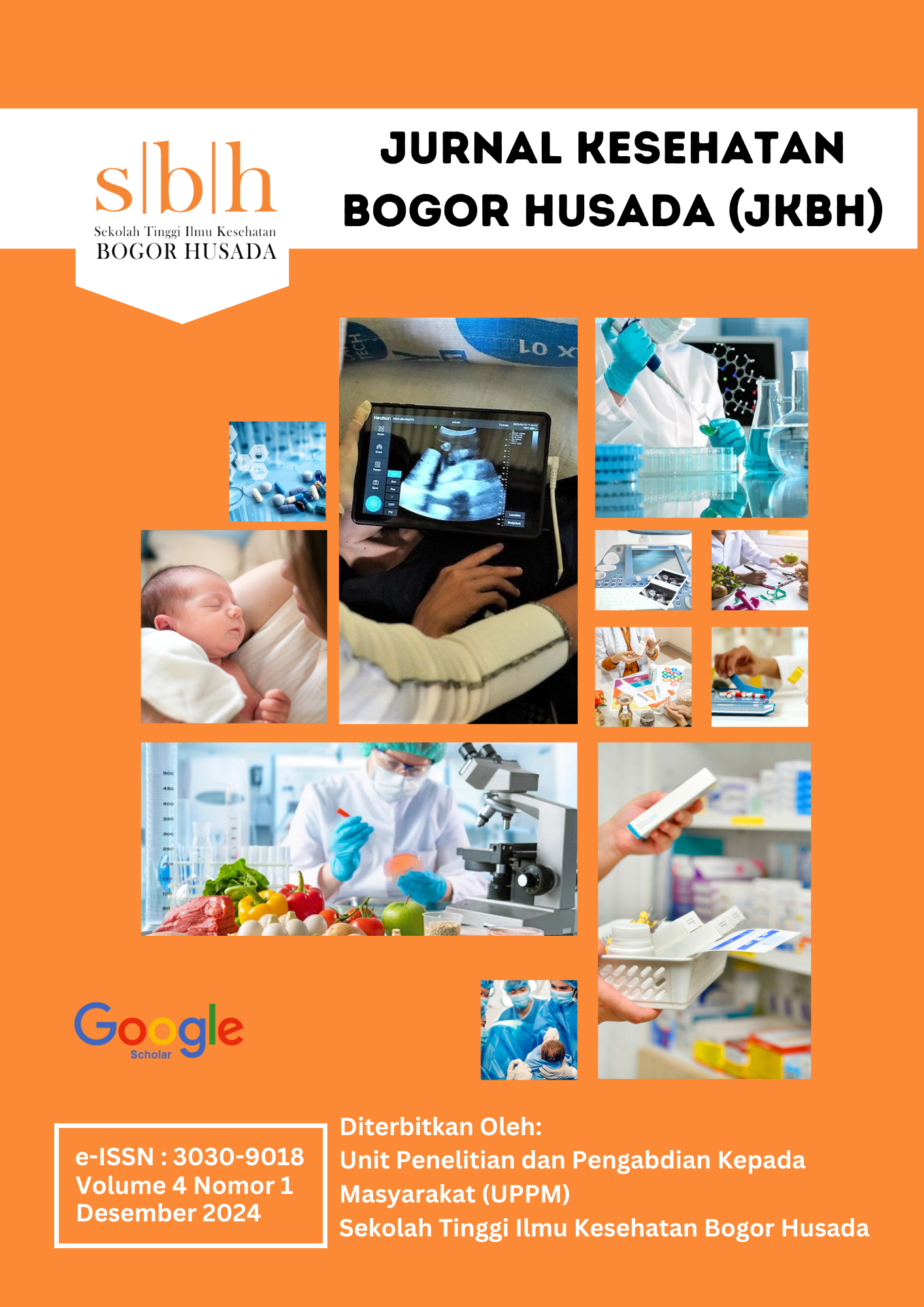HUBUNGAN KEPUASAN PASIEN RAWAT INAP DENGAN SISA MAKANAN PADA PELAYANAN INSTALASI GIZI DI RSAU dr. M. HASSAN TOTO
Keywords:
Food waste, minimum hospital service standards, satisfaction inpatient, hospitalAbstract
One of the critical indicators for assessing the achievement of minimum service standards in hospitals was ensuring that patient food waste was less than 20%. This condition was crucial because adequate food intake significantly supported the patient's recovery. This study explored the correlation between inpatient satisfaction levels and the amount of food waste in the nutrition service unit at RSAU Dr. M. Hassan Toto, with the expectation of providing more precise insights for improving service quality in the future. This research used a cross-sectional design. The study involved a minimum of 38 subjects, selected using a non-probability sampling technique with purposive sampling. The statistical analysis included univariate and bivariate (Chi-Square test and Spearman's correlation). The amount of food waste was measured using the Comstock visual estimation method. Patient satisfaction in this study was evaluated based on three leading indicators: food appearance, taste, and menu variety, measured across five categories ranging from very dissatisfied to very satisfied. Satisfaction with food appearance was assessed based on portion size, food color, and presentation. The average percentage of patient food waste was more than 20%, with the highest leftovers observed in the animal protein (30.35%) and plant protein (29.60%) groups. Based on the analysis conducted using Spearman and Chi-square tests, it was found that there was no significant correlation between the subjects' characteristics and the patients' food waste. This indicated that factors such as age, gender, or other characteristics of the subjects did not directly influence the amount of food waste. Furthermore, additional analysis using the Spearman test also revealed no significant relationship between patient satisfaction levels and the amount of food waste.
Downloads
Published
Issue
Section
How to Cite
Similar Articles
- Syafa Amelia Putri, Muh. Guntur Sunarjono Putra, Dendy Widianto, GAMBARAN SOSIAL EKONOMI DAN DEMOGRAFI, RIWAYAT KEHAMILAN, PENGETAHUAN GIZI, KUALITAS KONSUMSI PANGAN, DAN STATUS GIZI PADA IBU HAMIL , JURNAL KESEHATAN BOGOR HUSADA: Vol. 4 No. 1 (2024): Jurnal Kesehatan Bogor Husada
- Leny Ramadhan, MGS Aritonang, Yusi Anggriani, Ilham Maulana, ANALISIS SELISIH TARIF RILL RUMAH SAKIT DAN TARIF INA-CBGs PASIEN RAWAT JALAN DI RUMAH SAKIT X , JURNAL KESEHATAN BOGOR HUSADA: Vol. 3 No. 1 (2023): Jurnal Kesehatan Bogor Husada
- Vivi Marianah, Rahmadhani Tyas Angganawati, Ilham Maulana, ANALISIS WAKTU TUNGGU PELAYANAN RESEP TERHADAP KEPUASAN PASIEN BPJS POLI PENYAKIT DALAM DI INSTALASI FARMASI RAWAT JALAN RSUD CIBINONG TAHUN 2023 , JURNAL KESEHATAN BOGOR HUSADA: Vol. 3 No. 1 (2023): Jurnal Kesehatan Bogor Husada
- Yuanita Viva Avia Dewi, Anggun Janur Madanie, ASUHAN KEBIDANAN KOMPREHENSIF PADA NY. S DI PMB BIDAN S DI KAB. BOGOR , JURNAL KESEHATAN BOGOR HUSADA: Vol. 4 No. 1 (2024): Jurnal Kesehatan Bogor Husada
- Dwikani Oklita Anggiruling, Aldiza Intan Randani, Muh. Guntur Sunarjono Putra, GAMBARAN KONSUMSI PANGAN HEWANI DAN PREVALENSI STUNTING ANAK 0-59 BULAN DI WILAYAH TENGAH INDONESIA , JURNAL KESEHATAN BOGOR HUSADA: Vol. 3 No. 1 (2023): Jurnal Kesehatan Bogor Husada
- Dendy Widianto, GAMBARAN KEANEKARAGAMAN MAKANAN TRADISIONAL YANG BERKAITAN DENGAN ANTROPOLOGI , JURNAL KESEHATAN BOGOR HUSADA: Vol. 1 No. 1 (2021): Jurnal Kesehatan Bogor Husada
- Ezria E Adyas, Rahmi Dzulhijjah, ANALISIS KANDUNGAN GIZI PRODUK OLAHAN BUAH CAMPOLAY (POUTERIA CHAMPECIANA) , JURNAL KESEHATAN BOGOR HUSADA: Vol. 2 No. 1 (2022): Jurnal Kesehatan Bogor Husada
- Dwikani Oklita Anggiruling, Dendy Widianto, Diandini Andriani, Indriya Rahmadhona , GAMBARAN KEBIASAAN MAKAN DI LUAR DAN STATUS GIZI PADA MAHASISWA STIKES BOGOR HUSADA , JURNAL KESEHATAN BOGOR HUSADA: Vol. 2 No. 1 (2022): Jurnal Kesehatan Bogor Husada
- Ksatriadi Widya Dwinugraha, Dwikani Oklita Anggiruling , GAMBARAN POLA KONSUMSI GULA, GARAM, LEMAK DAN STATUS GIZI MAHASISWA STIKES BOGOR HUSADA , JURNAL KESEHATAN BOGOR HUSADA: Vol. 2 No. 1 (2022): Jurnal Kesehatan Bogor Husada
- Delviza Syari, Enchi Ven Velly Astria, KAJIAN RASIONALITAS PENGGUNAAN ANTIBIOTIK PADA PASIEN INFEKSI SALURAN PERNAPASAN AKUT (ISPA) PEDIATRIK DI RAWAT INAP RUMAH SAKIT UMUM KOTA TANGERANG SELATAN PERIODE JANUARI-DESEMBER 2019 , JURNAL KESEHATAN BOGOR HUSADA: Vol. 3 No. 1 (2023): Jurnal Kesehatan Bogor Husada
You may also start an advanced similarity search for this article.
Most read articles by the same author(s)
- Dwikani Oklita Anggiruling, Aldiza Intan Randani, Muh. Guntur Sunarjono Putra, GAMBARAN KONSUMSI PANGAN HEWANI DAN PREVALENSI STUNTING ANAK 0-59 BULAN DI WILAYAH TENGAH INDONESIA , JURNAL KESEHATAN BOGOR HUSADA: Vol. 3 No. 1 (2023): Jurnal Kesehatan Bogor Husada
- Syafa Amelia Putri, Muh. Guntur Sunarjono Putra, Dendy Widianto, GAMBARAN SOSIAL EKONOMI DAN DEMOGRAFI, RIWAYAT KEHAMILAN, PENGETAHUAN GIZI, KUALITAS KONSUMSI PANGAN, DAN STATUS GIZI PADA IBU HAMIL , JURNAL KESEHATAN BOGOR HUSADA: Vol. 4 No. 1 (2024): Jurnal Kesehatan Bogor Husada
- Muh. Guntur Sunarjono Putra, Lilik Kustiyah, Dwikani Oklita Anggiruling, GAMBARAN PENGENALAN MAKANAN PENDAMPING ASI (MP-ASI) PADA ANAK USIA 6-8 BULAN DI PERDESAAN DAN PERKOTAAN INDONESIA , JURNAL KESEHATAN BOGOR HUSADA: Vol. 3 No. 1 (2023): Jurnal Kesehatan Bogor Husada



